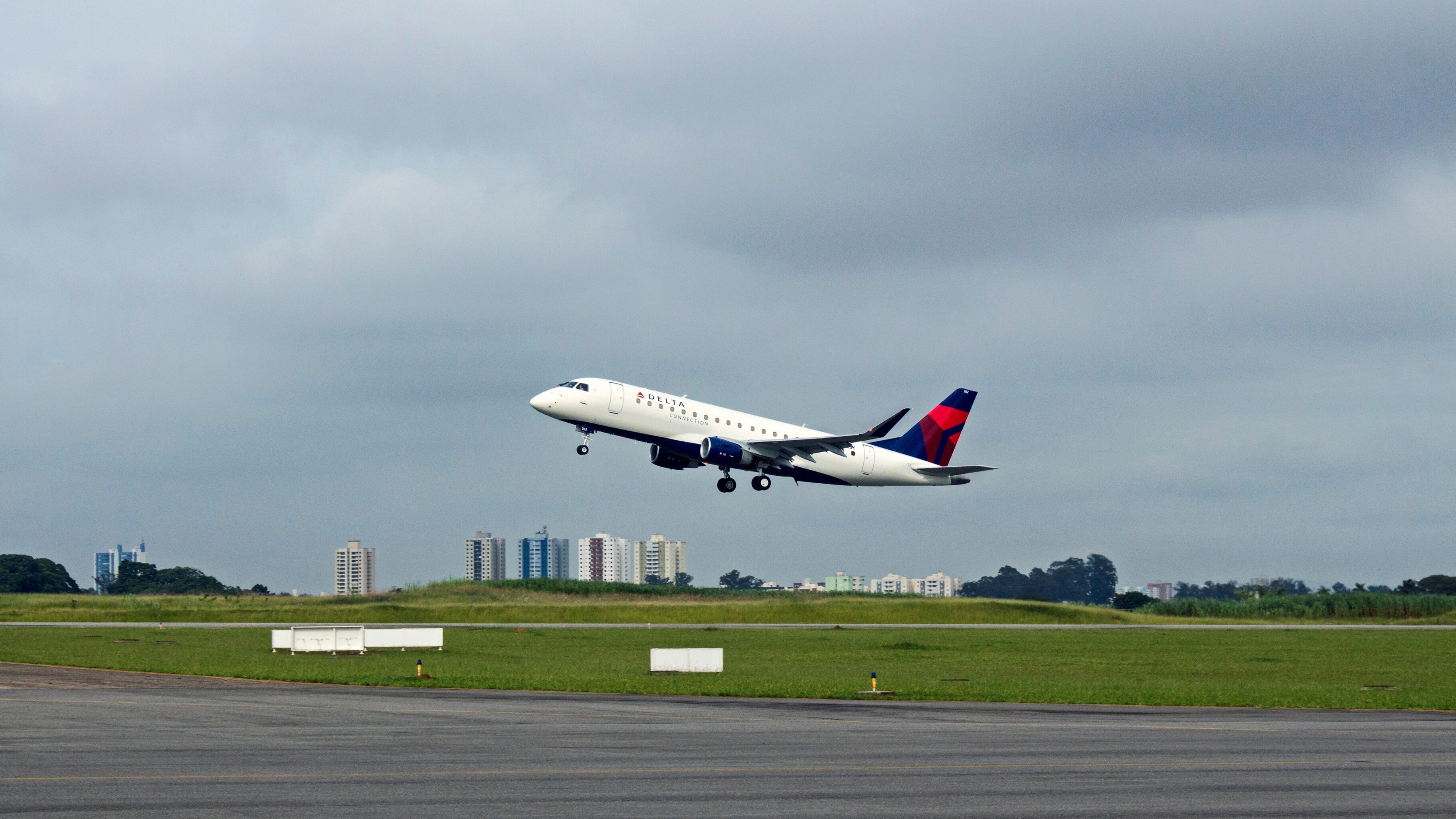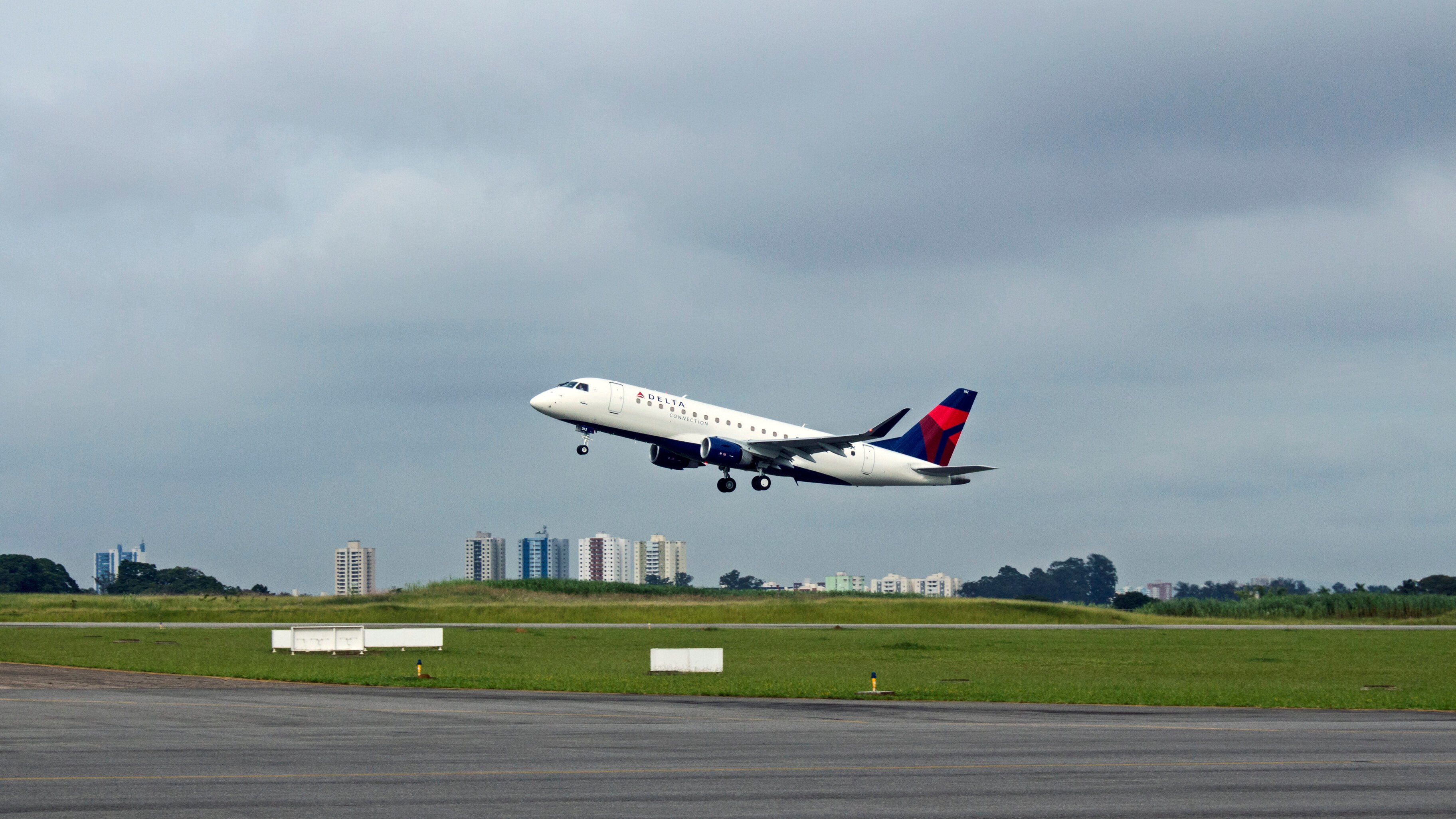On Wednesday, I wrote that regional airline king SkyWest (SKYW +0.22%) is a business under threat, due to the growing obsolescence of 50-seat jets. The company has long-term contracts to fly its fleet of more than 500 50-seat jets for various partners -- particularly Delta Air Lines (DAL +1.16%) and United Continental (UAL 0.02%) -- but once those contracts end, nobody will want these fuel-guzzling aircraft.
Other regional airline competitors like Republic Airways (NASDAQ: RJET) are better positioned for where the industry is headed. Republic primarily flies larger regional jets, which are far more popular with the legacy carriers today. Still, SkyWest is not standing still. Today, I'll look at some initiatives SkyWest is pursuing in order to survive and thrive despite the rapidly changing business environment.
Downsizing or upsizing?
SkyWest is aggressively expanding into larger (two-class) regional jet service, as the industry is rapidly moving in that direction. The company already operates 185 large regional jets and is looking to grow that number quickly. Last August, SkyWest agreed to remove 66 small regional jets from service with Delta by the end of 2015 in return for getting contracts to fly 34 larger regional jets.
While SkyWest will be operating fewer aircraft -- it's a natural result of flying larger planes -- this will not necessarily damage profitability. The major airlines are willing to pay a premium for two-class regional jets, so profit margins can be significantly better than for 50-seat flying.
In fact, in 2012, the ExpressJet segment -- which operates more than two-thirds of the company's 50-seat-jet fleet -- posted a loss. By contrast, the SkyWest segment (which operates most of the company's two-class jets), earned a respectable 5.5% pre-tax margin. In other words, SkyWest can benefit from addition by subtraction. Overall revenue from Delta may be somewhat lower under the restructured agreement, but SkyWest has an opportunity to offset that revenue loss through margin improvement.
SkyWest also recently won a 12-year contract to operate 40 Embraer (ERJ +2.46%) E175 76-seat regional jets for United. Moreover, United ordered another 30 E175 aircraft in April, which it plans to assign to one of its regional partners. Since SkyWest will already be flying E175s for United, the company may have a leg up vis-à-vis competitors in the bidding process for that additional work.
Optimistic management
SkyWest's management clearly believes that the company can remain the leading regional carrier for many years to come. Not only did SkyWest order 100 aircraft last month (40 for its United agreement and 60 for other contracts it hopes to win), the company also became the launch customer of the second-generation E175 this week with a firm order for 100 E175-E2 aircraft, and 100 options. The E175-E2 is expected to offer significant cost improvements compared to the current generation of regional jets, and will enter service in 2020.
SkyWest will also be one of the first operators of the new Mitsubishi Regional Jet, with firm orders for 100 aircraft, which will begin arriving in 2017. All of these new orders indicate that management is confident that SkyWest will win plenty of large regional jet business to replace the 50-seat flying that will disappear.
Investors should be on the lookout for new long-term agreements for SkyWest to operate these aircraft for the major airlines. Without new deals, SkyWest would have trouble making use of all the new planes it will be receiving. One potential cause for optimism is that top competitor Republic Airways is currently at an impasse in contract negotiations with its pilots, which makes it harder for Republic to bid for new business (because it lacks cost certainty). By contrast, most of SkyWest's workforce is not unionized.
Opportunities balance risks
I continue to think that Republic is better positioned than SkyWest and is a better investment opportunity at present. However, SkyWest does have a few things going for it. Most notably, the 50-seat flying that it will lose over the next five years is not very profitable. If the company can return or sell those unwanted aircraft without incurring excessive charges, SkyWest could be well positioned to benefit from the higher margins of the large regional jet business.
SkyWest has won two major contracts in the past year, indicating that the company is still very competitive with other regional airlines. Management has also been active in ordering state of the art regional jets, in the hope that their better fuel efficiency will help SkyWest win future deals. Threats remain for SkyWest, but the company is working hard to adapt and find a profitable niche in the new U.S. airline landscape.









